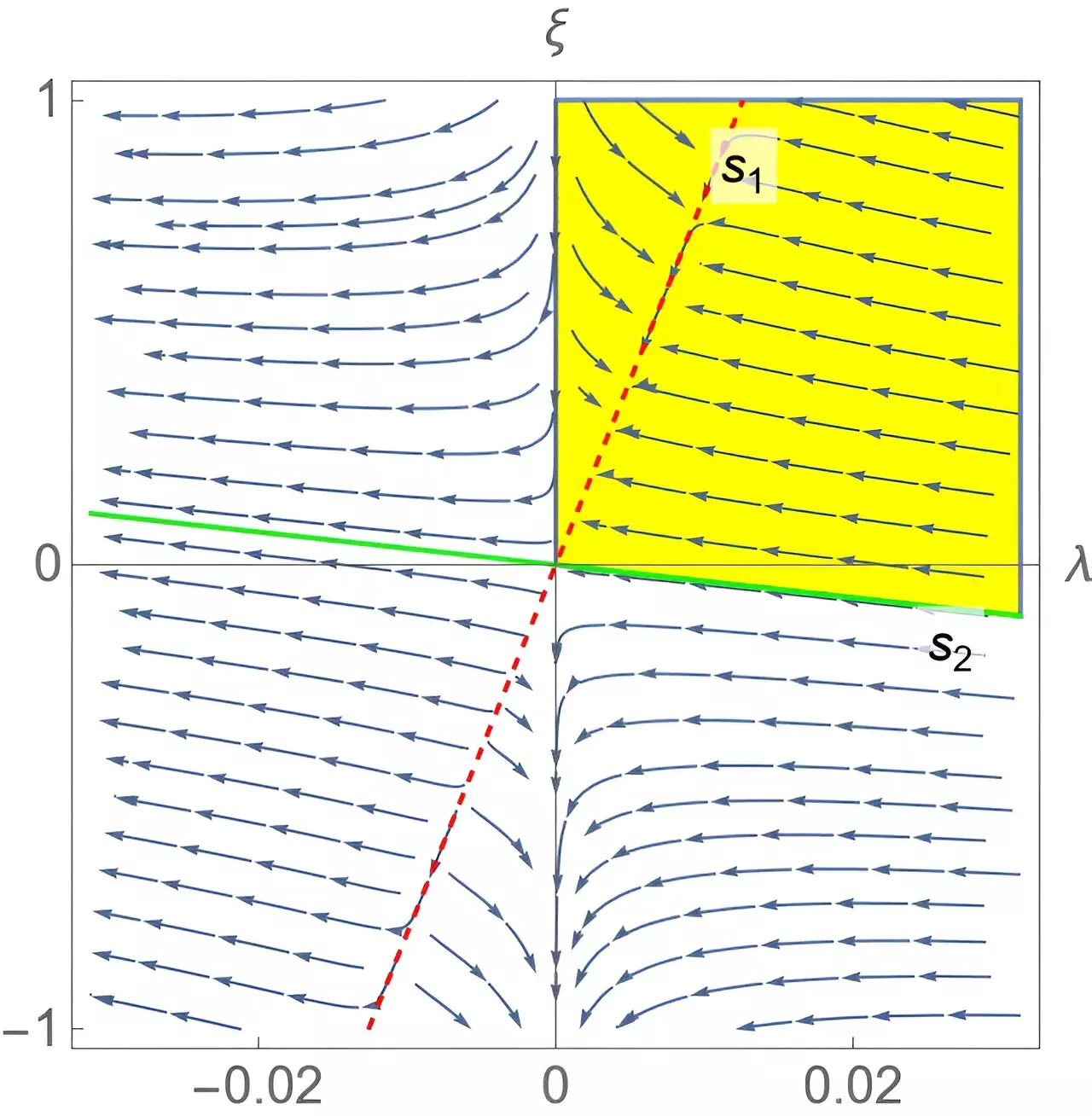Gravitation has long been a puzzle for physicists striving to meld the seemingly incompatible realms of quantum mechanics and general relativity. With their groundbreaking research, teams from the International School for Advanced Studies in Trieste, the University of Massachusetts, and Brazil’s Instituto de Física Teórica at Universidade Estadual Paulista are pushing the limits of our understanding of gravitational dynamics. Their latest publication in Physical Review Letters introduces a fresh framework for quantifying the beam of couplings in quadratic gravity, illuminating a path toward a robust theory that could profoundly change our comprehension of physical laws governing the cosmos.
Quadratic gravity builds on Einstein’s paradigm of general relativity, intricately weaving local curvature terms into the gravitational tapestry. While the allure of quadratic gravity rests on its mathematically rigorous foundation and its potential to resolve some of the quandaries facing both classical and quantum models, this nascent domain requires deeper exploration to fully realize its promise. As co-author John Donoghue passionately states, “Quadratic gravity is a renormalizable quantum field theory which is a potential candidate to describe gravity on all scales.” The implications of this research extend far beyond theoretical contemplation; they represent the groundwork for practical applications that may redefine gravitational theory.
Decoding the Beta Functions
At the heart of this innovative research lies the concept of the beta function, a pivotal element in quantum field theory (QFT) that maps the evolution of coupling constants across energy scales. As quantum amplitudes fluctuate, so too do the coupling constants that characterize these interactions. The new techniques introduced by Donoghue and his colleagues refine our understanding of this fluctuation, highlighting a fundamental aspect of quantum gravity that has eluded researchers for years.
The allure of their findings lies in the suggestion that coupling constants in quadratic gravity might display exceptional behavior at elevated energies—converging on values that suggest asymptotic freedom. Instead of spiraling out of control, a hallmark sign of dysfunction in many physical theories, quadratic gravity may hold the key to stable, nuanced descriptions of gravity’s workings. Thus, the research not only sheds light on theoretical constructs but offers considerable hope for practical applications in a multitude of fields.
Challenging Established Norms
The profound significance of this research also lies in its challenge to established paradigms. Previous attempts to quantify the running of coupling constants have yielded inconsistent results, muddying the waters of an already complex discourse. Yet, the work presented by Donoghue and his team, which explores new beta functions, represents a critical turning point in the pursuit of clarity. One might wonder whether this evolution is merely a technical refinement or the dawn of a new paradigm in gravitational physics.
Donoghue emphasizes the importance of these developments by stating, “One of the main implications of our work is that it is possible for the couplings of quadratic gravity to run to vanishingly small values at high energy.” This assertion transcends the mere technicalities of mathematical abstraction, representing a powerful reinterpretation of theoretical physics. Such insights could provide the bridge we need to harmonize disparate gravitational phenomena previously viewed as unbridgeable chasms.
The Bigger Picture: Implications for Quantum Gravity
The contributions made by this research group underscore the vital interconnectedness of various theories within the broader quantum field framework. As they work to demystify quadratic gravity, the potential it holds to enlighten and unify disparate gravitational models becomes increasingly apparent. Notably, the team eliminated the concerns surrounding unstable tachyons—a significant breakthrough that lends credibility to quadratic gravity’s perceived stability.
Aspects of quantum gravity remain enigmatic; Donoghue remarks, “Quadratic gravity fits in a larger framework of quantum field theories of gravity, and there is much that needs to be understood about all these theories.” This notion captures the very essence of scientific endeavor: the relentless pursuit of understanding even the tiniest threads that weave the fabric of reality. The implications of their findings could eventually lead to a standardized quantum field theory of gravity, bridging the gap between the microcosmic and cosmic realms.
In pursuing these revelations, the researchers hope to generate fresh insights into scattering amplitudes and cross-sections within quadratic gravity. Such understanding could herald a new era of gravitational studies, where physics is as predictable as it is profound. The quest within this transformative paradigm is not merely academic; it seeks answers to fundamental questions and challenges us to rethink our understanding of the universe. In doing so, the researchers pave the way for future innovations that could reshape our grasp of the very forces that govern existence itself.

